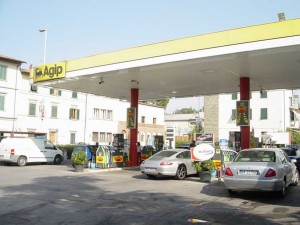It’s all a matter of perspective. For Americans, gasoline prices are an increasingly sore subject as the pump starts edging up toward $4 again – almost 50% more than what motorists were paying just two years ago.
Then again, compared to the nearly $10 a gallon drivers are shelling out in Turkey and parts of Italy, that might seem a downright bargain. That is, of course, until you consider that in some parts of the world where oil supplies are plentiful, the price can be as low as a dime.
As Americans have come to grudgingly understand, all sorts of factors influence what you’ll pay at the pump. There are macro factors like rising or falling global demand, wars and embargoes and the European debt crisis. There are also micro issues, such as pipeline and refinery problems that have added a quarter or more to the price of fuel in the Midwest in recent weeks – pushing Michigan to an average $4.078 a gallon and Illinois to $4.162.
Europeans routinely pay more than motorists just about anywhere else on the planet, an all-time record averaging 1.70 Euros a liter, or $8.23 a U.S. gallon.
According to data collected by ChartsBin.com, Turks are now coughing up an average $2.52 – a liter, or $9.538 a gallon. Italy has it relatively cheap, on the whole, at $1.87 a liter, or $7.078. But it’s nudging $9.50 in many parts of the country, especially tourist regions, as the summer winds down, reports the Bloomberg news service.
“It’s blackmail for people like me who don’t live in a big city and can’t take public transport,” said Costanza Cappelli, a 32-year-old consultant to a jewelry maker, who lives in the Tuscan countryside, told Bloomberg. “I don’t have an alternative.”
Prices in Europe are being influenced by a variety of factors. One might expect costs to come down as economic activity slows and demand for fuel declines. But the European debt crisis has been punching up costs, especially as the Euro weakens and can buy less crude oil. Governments have also been raising taxes, in many countries, in a desperate bid to offset declining revenues.
Here in the U.S., fuel prices have ridden a roller-coaster this year. In early April the numbers approached $4 and neared the all-time peak of $4.11 a gallon set in July 2008. Some analysts began forecasting American motorists might soon see $5 or more in the near future. Instead, prices tumbled – though nowhere near as shortly as after the 2008 run-up. By this time in 2009, prices had settled back to an average $2.70 a gallon.
In recent weeks, however, prices have spiked again. A general run-up in much of the U.S. is all the worse in some regions, such as the Midwest, where a pipeline failure and refinery issues have forced distributors to scramble for supplies.
Illinois motorists are now paying more than their counterparts in California, where prices normally top those of anywhere else in the Continental U.S. The Golden State is currently averaging $4.146 a gallon according to GasBuddy.com. But Hawaii tops the country at $4.368.
A perusal of ChartBin data shows that prices can vary widely from one neighboring country to another, often as a result of taxes. But having a ready supply of oil waiting underground also can benefit a nation’s consumers.
Saudi Arabian drivers are paying just 16 cents a liter, or about $0.60 a gallon. And that’s a stiff figure compared to South American OPEC member Venezuela, at less than $0.10 a gallon. Neighboring nations Guyana, Columbia and Brazil range from $3.50 to nearly $6.00.

